2023 台北國際藝術博覽會 (四) / ART TAIPEI 2023 (Part 4)
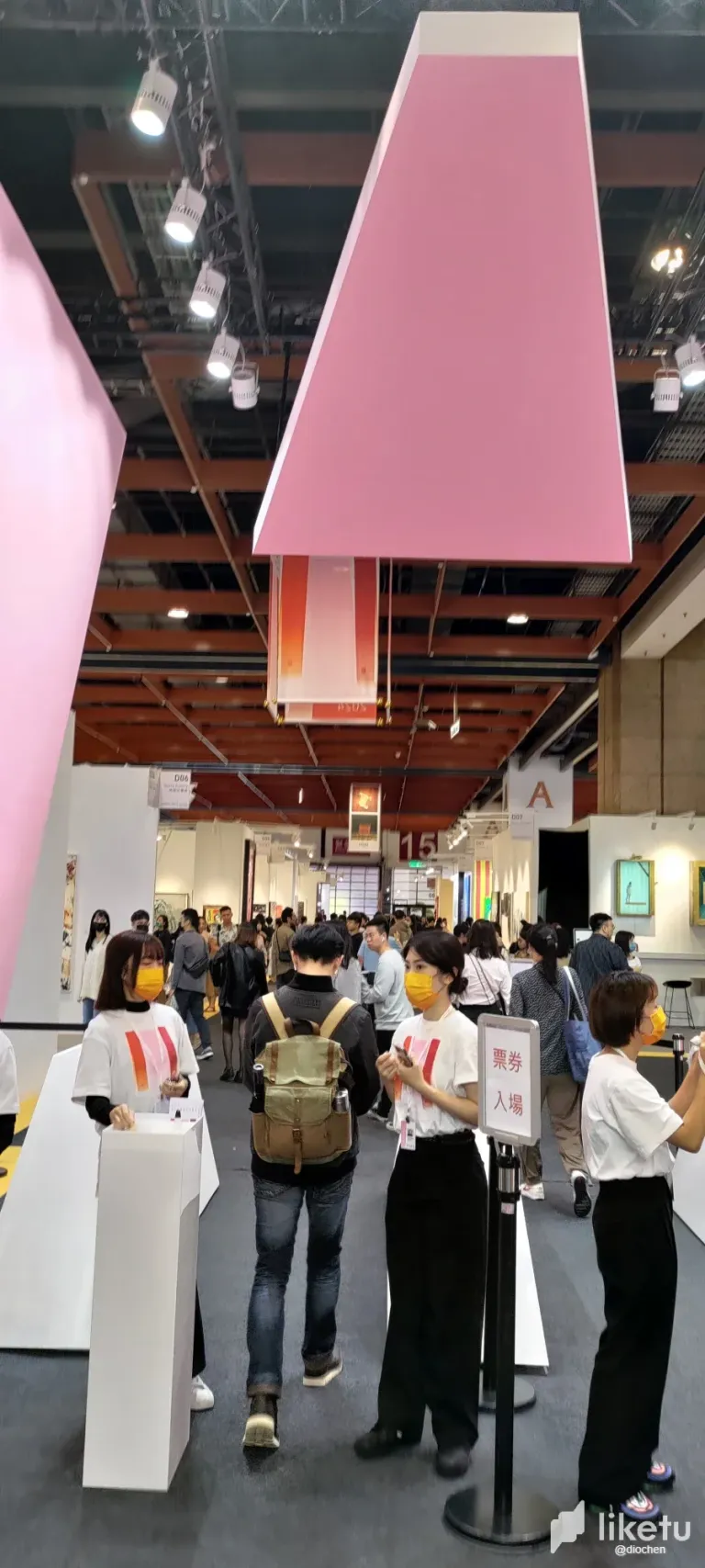
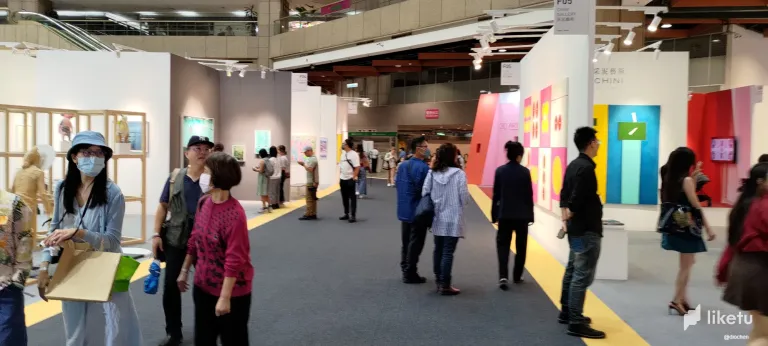

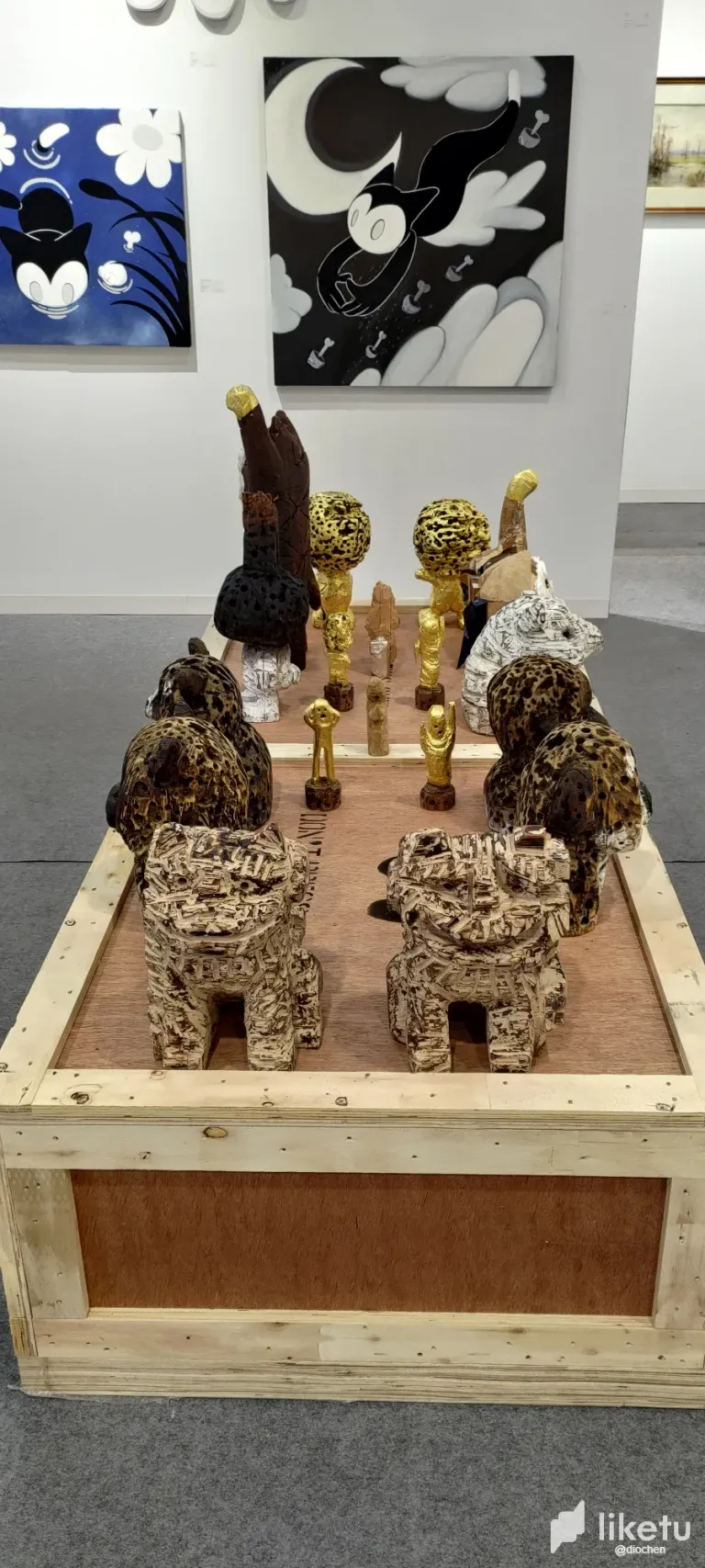
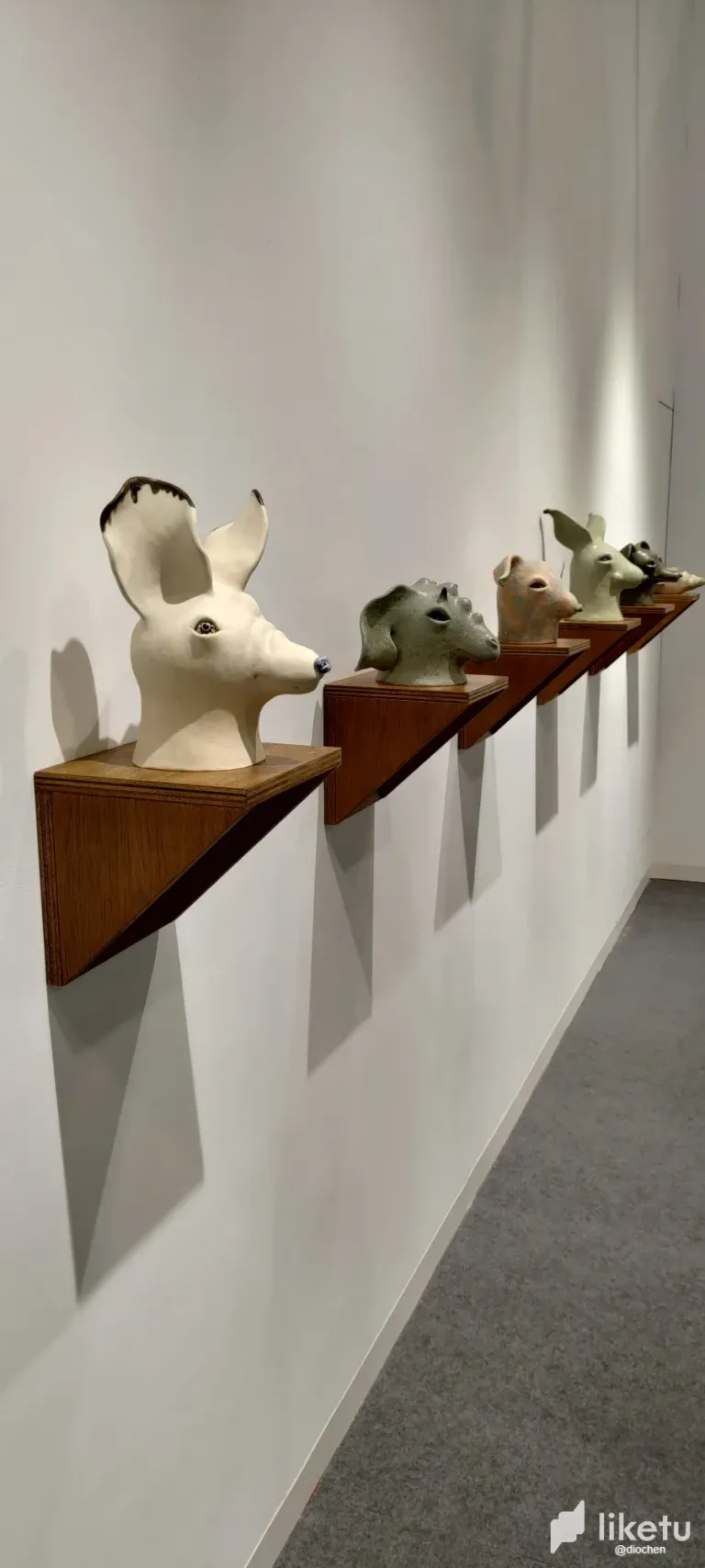
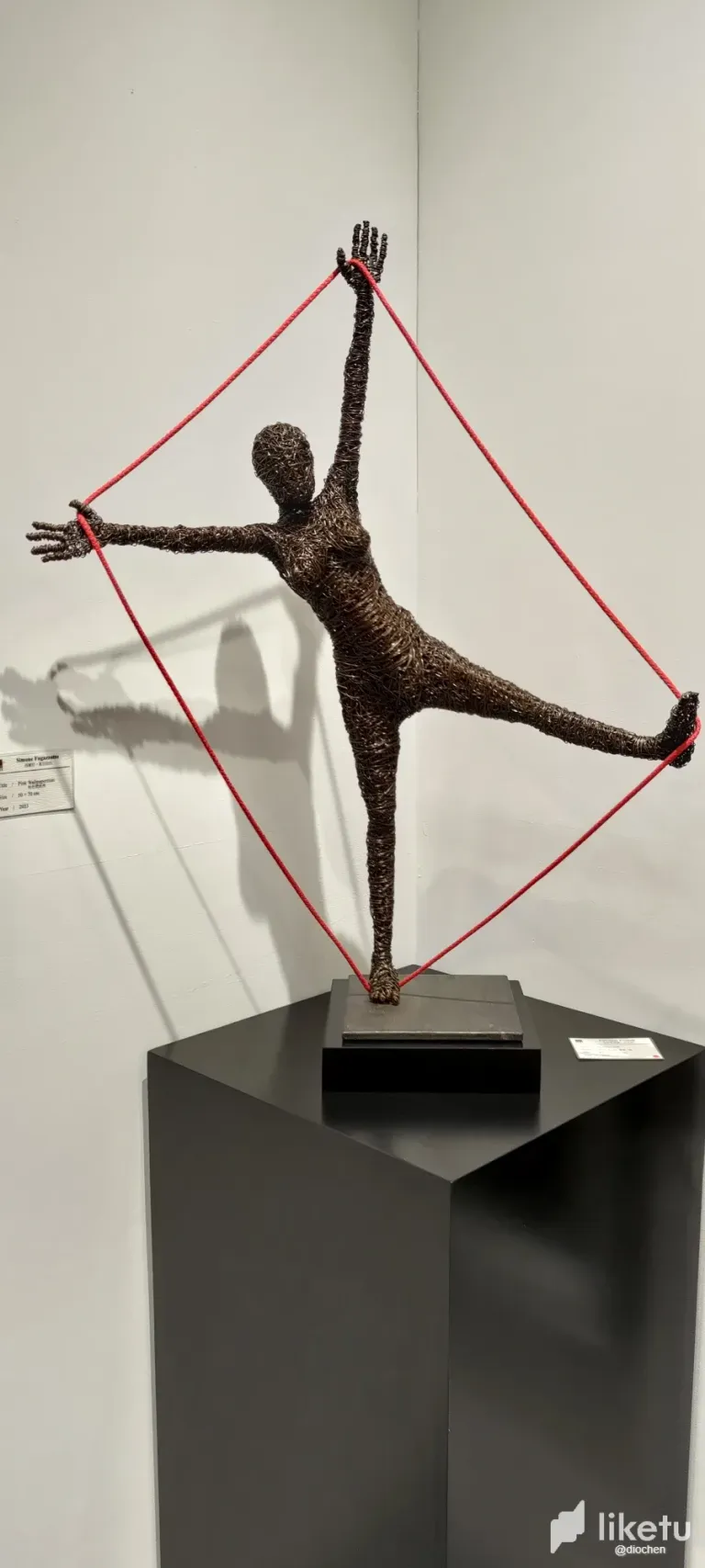
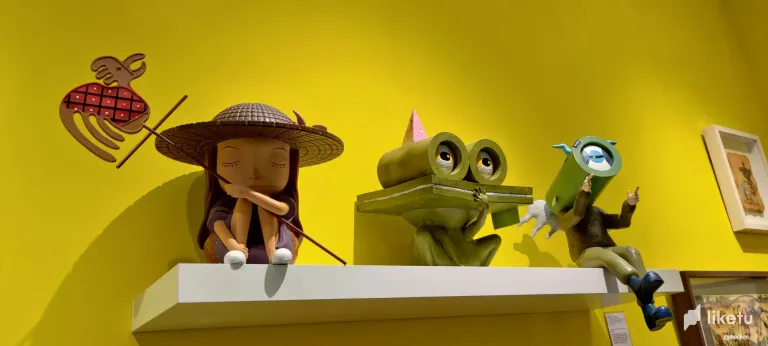
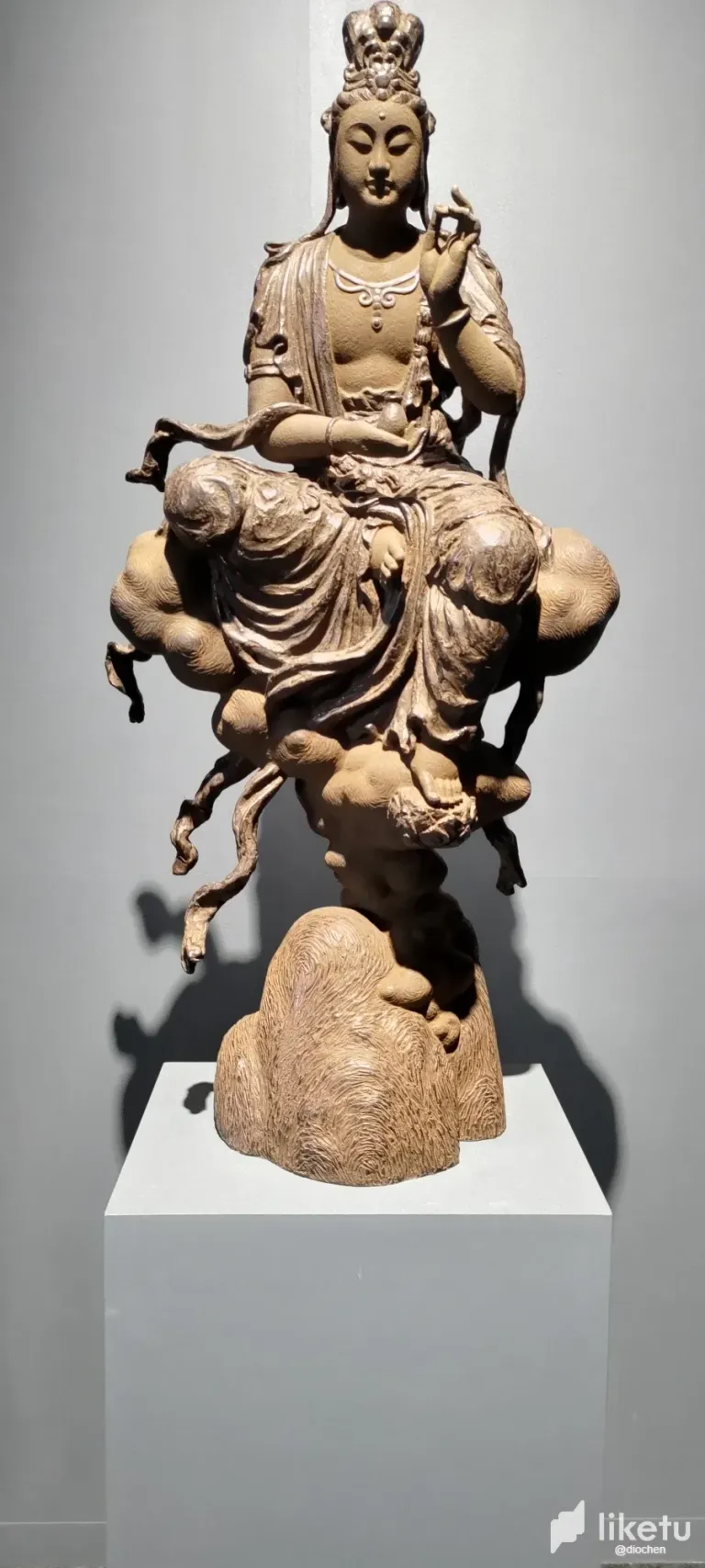
MIT 新人推薦特區是台北國際藝術博覽會與文化部合作,呈現台灣藝術家的亞太藝術觀點,展出優秀新銳青年藝術家作品,今年獲獎藝術家作品型態多元,從油彩、壓克力顏料,到錄像攝影、不銹鋼雕塑至中性筆紙本繪畫,呈現了台灣當代藝術領域中青年藝術家的特色,因為這特區是博覽會主打的重點,所以,專人導覽時,都會特別帶到這區,稍稍解說及推廣新人藝術家,新人藝術家的作品往往較前衛,帶些新意味或突破,假如,想找到未發光的畢卡索的話,就要從新人藝術家中好好觀察。
台灣原住民們有著豐富多元的文化及歷史,原住民族藝術特區是前幾年才推出的新形式,和出色的原住民藝術家合作,展示具有原住民部落風格的作品,台灣過去數十年來,原住民各族群的文化發展,大多是以漢族文化為認同之目標,原住民的青少年在雙重的文化認同混淆之下,產生了族群文化認同危機,不過,近年來,各原住民族群越來越重視族群認同,追求族群文化、儀式或語言的傳承延續,像是賽夏族的矮靈祭是很多台灣人都知道的原住民傳統祭儀活動,也是賽夏族族人們心目中最重要的祭儀活動之一,其它有名的還有達悟族的飛魚祭、布農族打耳祭、阿美族豐年祭都是為人所知,表示,在台灣群族融合的蠻密切,基本上,也算得上是互相尊重,而原住民的藝術創作多以木雕、石雕、陶藝、織繡、編織工藝等為主,並帶有族群意識的複合創作為主。
其中有件懸掛的船型作品,我看到時,還猜想這件作品有何特別之處,後來聽解說後,才知道作者用乾燥的香蕉皮、裝載香蕉的紙箱與美金紙幣所創作的作品「香蕉船」,作者想表達過往殖民時期歷史,台灣是之前是香蕉生產大國,透過經濟作物與勞力生產下的作物,交換等價的貨幣,並呈現作者對歷史、土地與勞動的各種感受、發掘與想像,這些作品背後的內涵,需要跟藝廊人員詢問,才有可能知道的。
現場畫廊或藝廊展示的作品,大部份都有標價錢,我稍稍比較過價錢,比較沒名氣或是新人藝術家的傳統繪畫作品,大概落在萬元台幣上下,但根據作品大小及製作複雜度可能價錢又不一,我看到有副畫作,它不是用畫的,它是用各式各樣的布料拼貼出來的,是非賣品,假如,在現場看到滿意的作品時,可以直接向現場藝廊專人詢價購買,之前,就有提到,這次展覽的作品有好些是大師的作品,萬一展品被偷盜的話,可就損失慘重,這就是為何現場的保全其實蠻嚴謹的原因。
The MIT Newcomer Recommendation Zone is a collaboration between ART TAIPEI and the Ministry of Culture in Taiwan, showcasing the Asia-Pacific art perspectives of Taiwanese artists. It exhibits the works of excellent young artists, and this year’s award-winning artists’ works are diverse, ranging from oil painting, acrylic paint, to video photography, stainless steel sculpture to neutral pen paper painting. It presents the characteristics of young artists in the field of contemporary art in Taiwan. Because this special zone is the main focus of the expo, during guided tours, guides will specifically bring visitors to this area and briefly explain and promote new artists. The works of new artists are often more avant-garde, bringing some new flavors or breakthroughs. If you want to find an undiscovered Picasso, you have to observe carefully among the new artists.
The indigenous people of Taiwan have a rich and diverse culture and history. The Indigenous Art Special Zone is a new format introduced a few years ago. It cooperates with outstanding indigenous artists to display works with indigenous tribal styles. In the past decades in Taiwan, the cultural development of various indigenous groups has mostly been aimed at identifying with Han culture. Indigenous teenagers have a cultural identity crisis under the confusion of dual cultural identities. However, in recent years, various indigenous groups have increasingly valued ethnic identity and pursued the inheritance and continuation of ethnic culture, ceremonies or languages. For example, the Dwarf Spirit Festival of the Sai Xia tribe is a traditional indigenous ceremony known to many Taiwanese people and is one of the most important ceremonial activities in the hearts of Sai Xia tribespeople. Other famous ones include the Flying Fish Festival of the Tao tribe, the Ear Beating Festival of the Bunun tribe, and the Amis tribe’s Harvest Festival are well-known, indicating that ethnic integration in Taiwan is quite close. Basically, it can be considered as mutual respect. The artistic creation of indigenous people is mostly based on wood carving, stone carving, pottery, embroidery, weaving crafts, etc., and compound creation with ethnic consciousness is the main theme.
Among them is a hanging boat-shaped work. When I saw it, I was wondering what was special about this work. After listening to the explanation later, I learned that the author used dried banana peels, boxes for loading bananas and US dollar bills to create the work “Banana Boat”. The author wanted to express the history of past colonial times. Taiwan was previously a major banana-producing country. Through economic crops and labor-produced crops, exchange equivalent currency, and present the author’s various feelings, discoveries and imaginations about history, land and labor. The connotations behind these works need to be asked by gallery staff before they can possibly be known.
The works displayed by on-site galleries or galleries are mostly priced. I have compared prices slightly. The traditional painting works of less famous or new artists are roughly around tens of thousands of Taiwan dollars. But according to the size of the work and the complexity of production may not be one price. I saw a painting that was not painted. It was made up of all kinds of fabrics. It was not for sale. If you see satisfactory works on site, you can directly ask for price purchase from on-site gallery professionals. As mentioned before, some of the works exhibited this time are masterpieces. If they were stolen, it would be a heavy loss. This is why on-site security is actually quite strict.
For the best experience view this post on Liketu
Yay! 🤗
Your content has been boosted with Ecency Points, by @diochen.
Use Ecency daily to boost your growth on platform!
Support Ecency
Vote for new Proposal
Delegate HP and earn more